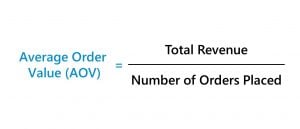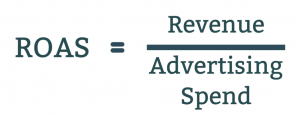The Secrets of The Affiliate Marketing Formula and Metrics Unlocked

Mastering the affiliate marketing formula is essential for achieving success and maximising your earnings in 2025. If you’re serious about turning your affiliate marketing campaigns into a profitable venture, understanding the math behind the money is non-negotiable.
Table of Contents
- ROI – Return on Investment
- EPC – Earnings Per Click
- CPL – Cost Per Lead
- CPA – Cost Per Acquisition
- CR – Conversion Rate
- CTR – Click Through Rate
- AOV – Average Order Value
- ROAS – Return on Ad Spend
- Why ROI Is The Most Important Affiliate Marketing Formula
- Real-World Applications for Your ROI Formula
- Frequently Asked Questions
The First Affiliate Marketing Formula You Need To Understand
1. ROI – Return on Investment
When it comes to affiliate marketing success, the key metric for achieving affiliate marketing success is Return on Investment (ROI). The powerful formula shows the percentage of money made or lost on affiliate marketing campaigns to provide essential information about overall profitability. Simplistic and precise, ROI is lovely – it just informs you whether or not your marketing strategy is profiting. You could have good conversion rates and eye-catching click-through rates, yet if your ROI is negative, then you remain in the red.

How to Use It
- Start by determining your Net Profit by subtracting all your expenses from your total affiliate marketing earnings.
- Then, divide by your Total Investment and then multiply by 100 for your ROI percentage.
- Suppose your commissions earned were $2,000, but you spent $500 on advertising, your ROI would be (($2,000 – $500) / $500) × 100 = 300%. That is, for each dollar of investment, you earned $3 in profit.
2. EPC – Earnings Per Click
EPC, or Earnings Per Click, is the average amount of money earned per click on your affiliate link. It’s a measure that tells you which sources of traffic are bringing the most value so you can focus your efforts where it matters most. It’s a metric that shows how much money you earn on average every time someone clicks on your affiliate link. It helps you measure the performance of your affiliate campaigns and compare different offers or products.

How to Use It
- Track Clicks: Monitor how many people click on your affiliate links using tracking tools or affiliate dashboards.
- Track Earnings: Check how much commission you’ve earned from those clicks in a given time period (daily, weekly, monthly, etc.).
- Apply the Formula: Plug the numbers into the formula.
- Interpret the Result: A higher EPC means you’re earning more per click, which is usually a sign of a high-converting offer or targeted traffic.
3. CPL – Cost Per Lead
For service-based affiliate programs, Cost Per Lead or CPL comes into play. This is the calculation to determine how much you’re paying to acquire each new lead, which is critical for lead generation campaigns and not for direct sales. It’s a metric that tells you how much you’re spending to generate a single lead (like a signup, form submission, or any predefined action that doesn’t involve a sale yet). It helps measure how efficiently you’re acquiring potential customers.

How to Use It:
- Track Your Ad Spend: This could include money spent on Google Ads, Facebook campaigns, influencer payouts, etc. Example: You spent R1,000 on a Facebook ad campaign.
- Count the Number of Leads Generated: Leads are users who took a specific action, like signing up via your affiliate link. Example: Your campaign resulted in 50 leads.
- Apply the Formula by dividing your total ad spend by the number of leads you got.
4. CPA – Cost Per Acquisition
Working with top CPA affiliate programs requires you to understand your Cost Per Acquisition. This is what you pay to get each new customer, allowing you to estimate how efficient your marketing spend is. This formula helps you understand how much it costs to get one customer or conversion (such as a sale, sign-up, or download) through your affiliate efforts. It’s a key metric to measure the efficiency and profitability of your campaigns.

How to Use it:
- Total Cost: The total amount spent on a campaign (ad spend, influencer payments, affiliate payouts, etc.).
- Number of Acquisitions: The number of successful conversions (sales, leads, sign-ups, etc.) generated by the campaign.
- Apply the formula by dividing the total cost by the number of acquisitions and you’ll get your cost per acquisition.
5. CR – Conversion Rate
Your conversion rate informs you of the ratio of visitors who take the desired action after clicking on your affiliate links. An average Conversion Rate is typically a reflection of quality targeting and impossible-to-resist offer presentation. The Conversion Rate shows the percentage of people who take a desired action (like making a purchase or signing up) after clicking your affiliate link.

How to Use It:
- Track how many people visited your affiliate link or landing page.
- Count how many of those actually converted.
- Plug the numbers into the formula to see what percentage converted.
6. CTR – Click Through Rate
Tracking the percentage of people who click on your affiliate links after viewing them, CTR measures if your content marketing is generating interest and leading to action. It measures the percentage of people who click on your affiliate link out of the total number of people who saw it. It helps gauge the effectiveness of your ad, email, or other promotional content.

How to Use It:
- Clicks: Track how many times your affiliate link was clicked.
- Impressions: Track how many times your ad, email, or link was displayed to users.
- Use the formula to calculate the percentage of people who clicked on your link.
7. AOV – Average Order Value
The Average Order Value represents the average amount spent by customers per order. The Average Order Value is a valuable metric that helps to understand customer spending behaviour and identify opportunities to increase transaction values. Successful affiliate marketers can track AOV to focus on promoting products with higher commission potential and implement strategies to encourage larger purchases.

How to Use It:
- Total Revenue: Track the total amount of money earned from the orders generated through your affiliate links.
- Number of Orders: Count the total number of orders or transactions.
- Use the formula to calculate the average value of each order.
8. ROAS – Return on Ad Spend
Return on Ad Spend calculates the revenue generated for every dollar spent on advertising. This formula is particularly important when running paid campaigns to drive traffic to your affiliate links. A ROAS of 3:1 means you’re earning $3 for every $1 spent on ads – a critical insight for evaluating and optimising your advertising effectiveness across different platforms and campaigns.

How to Use It:
- Revenue from Ads: Track the total revenue generated through the ads or campaigns you’re running.
- Ad Spend: Track how much you spent on those ads.
- Use the formula to calculate how much revenue you earned for every dollar spent on ads.
Why ROI Is The Most Important Affiliate Marketing Formula
All of these metrics are helpful, but ROI reigns supreme among affiliate marketers. Here’s why:
- It Captures Real Profitability: You can have good EPC or excellent conversion rates, but if your expenditure is greater than your income, your business is not sustainable. ROI gives you the complete picture.
- It Guides Resource Allocation: Looking at ROI across different campaigns, you can make the best-informed decisions to invest your budget in the highest-rewarding opportunities.
- It Reveals Campaign Effectiveness: ROI will establish which traffic sources, affiliate programs, and commission structures yield the largest returns, leading to enhanced profitability with time.
- It Enables Strategic Decision-Making: With clear ROI information, you can make rational decisions on which affiliate links to showcase, which social media accounts to focus on, and which products should be further highlighted.
Real-World Applications for Your ROI Formula
Good affiliate marketers don’t just calculate ROI – they also act on it. Here is how to use this formula most effectively:
- Verify Campaign Profitability: Calculate ROI on a regular basis for each campaign to quickly spot winners and losers.
- Optimise Budget Allocation: Shunt budget away from low-ROI campaigns towards high-performers to optimise overall affiliate revenues.
- Analyse Traffic Sources: Compare the ROI of different channels to determine where your ideal customers actually spend their time.
- Test and Optimise: Use ROI insights to guide A/B testing of different promotional tactics, commission rates, and affiliate programs.
Use our Free Affiliate Marketing Calculator
Measuring accurately is the key to making the right decisions. Apply these formula with our affiliate marketing calculator to work out how well your campaigns are performing.
For those who want to further learn, take a look at the rest of our affiliate marketing resources or read more from our blog to gain more insight on these fundamental formulas.
Ready To Turn Your Affiliate Marketing Results Around?
Having and applying the correct affiliate marketing formula will be the difference between success and failure in this cutthroat industry. Monitoring the ROI and looking at associated metrics like EPC, conversion rates, and average order value will provide a metrics-based plan that will always deliver.
Looking to take your affiliate marketing up a notch? Join our newsletter to receive even more expert insights and actionable tips. Have the following formulas proved helpful in your campaigns? Drop a comment!
Frequently Asked Questions (FAQs)
Q: What is an affiliate marketing formula?
A: An affiliate marketing formula refers to the mathematical calculation that is used to measure and optimise the performance of affiliate marketing campaigns. Affiliate marketing formulas allow marketers to assess key metrics such as Return on Investment (ROI), Earnings Per Click (EPC), Click-Through Rate (CTR), Conversion Rate, and Cost Per Acquisition (CPA). With these formulas, affiliate marketers can make sound decisions to adjust their strategies and enhance overall campaign profitability.
Q: Why are affiliate marketing formulas important?
A: Affiliate marketing formulas matter because they establish an exact and measurable way to gauge performance, find out what can be enhanced, and improve marketing strategies. With formulas applied, affiliates can make better-informed decisions and reap more benefits from it.
Q: How can I use affiliate marketing formulas to improve my campaigns?
A: By calculating and examining key affiliate marketing metrics such as EPC, CPL, and Conversion Rate on a regular basis, you can know which campaigns are working and which campaigns require optimisation. Use this knowledge to refine your strategies, give priority to top-performing campaigns, and make data-driven choices to optimise your overall affiliate marketing campaign.

Ruaan Kleynhans
Senior Affiliate Marketing Specialist
Fueled by a passion for performance and precision, this seasoned professional has carved a niche in the fast-paced world of online gambling and casino marketing. With years of hands-on experience as a Key Affiliate Account Manager, he blends deep industry knowledge with cutting-edge digital marketing strategies to deliver outstanding results. Renowned for his ability to nurture VIP casino clients and harness analytics for actionable insights, he brings a data-driven mindset to every challenge.





